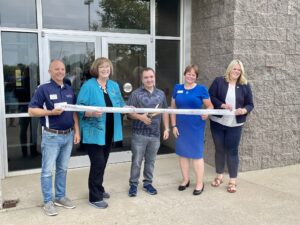
South Dakota has some unique challenges when building community and capital resources for startup founders. We have a small and spread-out population compared to the rest of the country. There are also just fewer people working on developing high-growth technology startups at any given time, which makes it difficult to build a non-profit organization around helping such founders. If a community like Sioux Falls has one fundable technology startup every year, it would be impossible to build a non-profit to serve them because there would be nothing for them to do most of the time. This means startup community organizations in smaller communities either need to think more broadly about the types of organizations that they serve, or they need to serve a broader geographic area.
Given the realities of the startup landscape we live in, it’s probably time to think more broadly about what a regional startup ecosystem along the I-29 corridor looks like that spans from Omaha in the south to Fargo in the north. Emerging Prairie (Fargo), Startup Sioux Falls, the Paulson Center (Madison), and StartHub (Aberdeen) are great examples of what communities do when they prioritize new business formation, yet each organization is limited by the resources (talent, education, and capital) in their community. If these organizations were to become individual nodes in a broader network for startup resources, they would be able to offer both their own programming and have the opportunity to connect founders to a broader ecosystem of startup capital, community, mentorship, and other resources across the region.
How do we do this? There are four general opportunities that will allow communities in the I-29 corridor to move in this direction:
- Capital – We should expand the regional base of capital by offering true “first check” funding in coordination with state governments. We should continue fostering the network of South Dakota angel funds and expanding them into other states. Eventually there should be a later-stage fund that can offer $1-$1.5m capital into growing startups. Finally, we should make connections to national VC players.
- Mentorship – We should develop a corridor-wide mentor network that provides an opportunity for startups in any community to receive mentorship on a wide range of topics. Startup Sioux Falls has a great head start with its mentor network, that already has more than 40 mentors. The East-river universities are working on an entrepreneur-in-residence program that will compliment existing efforts. Coordinating these efforts and expanding them to smaller communities will allow founders in rural communities to receive world-class mentorship remotely from other experienced founders and business professionals.
- Creating an I-29 Startup Community – Entrepreneurs need to be able to relate to other entrepreneurs to succeed, and it’s difficult to do that in small communities that have relatively few founders. Perhaps it’s time to create a digital community of startup founders along the I-29 corridor that interact primarily online using Slack, Zoom, and Facebook groups. We could also think about what a regional 1 Million Cups event that is operated entirely on Zoom with different communities taking turns hosting the event each week. This community could be anchored by quarterly or annual in-person events in communities around the region.
- Fostering University Collaboration – One of the challenges that I see as an angel investor, is that university researchers often don’t want to commercialize their own work. They want to license the idea out and have someone else run with it. What if we could connect biomedical researchers at USD, cyber security researchers at DSU, or agricultural technology researchers at SDSU, and connect them with business students and business leaders across the university system? Our universities could develop a clearinghouse of research coming out of their schools that could be used to connect business-minded founders with new technology and research ideas throughout the I-29 corridor.
Wrap-up
Over the next few years I think we need to gather some key stakeholders and start mapping out a regional startup ecosystem that spans from Omaha to Fargo that creates resources, capital, and community that our individual startup communities and organizations don’t have the resources to provide. Imagine what we could do if we could combine the efforts of Startup Sioux Falls, Emerging Prairie, the Paulson Center, SD Biotech, and universities across the I-29 corridor. We could build a startup ecosystem that rivals just about anywhere and provides the capital, the community, the mentorship, and the education that founders need to succeed with their startups.
If we think about who is best equipped to take the lead on such an effort today, it’s our universities. They have institutional track records, have an existing base of technology transfer efforts, have technology and business students graduating every year, and have the ability to attract state and donor funding. It will require some out of the box thinking and new levels of collaboration, but the challenges that we have to overcome are doable, and I think we should try to overcome them for the betterment of our founders, our communities, our universities, and the region.
